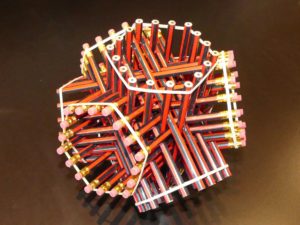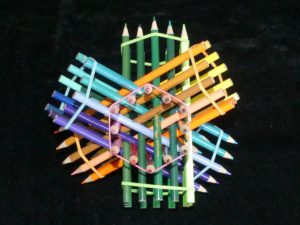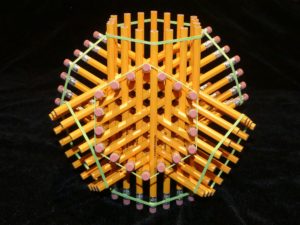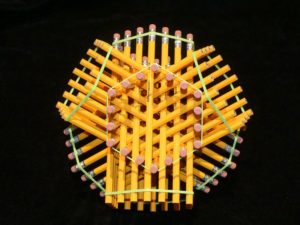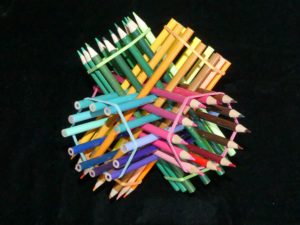A Hexastix is a very attractice model made from pencils and elastic bands. For obvious reasons it’s a great thing to make in an office, but it’s also fun to do at school if the children are capable of working carefully and methodically, perhaps in twos or threes.
You can make it from any multiple of 24 pencils – so 24, 48, 72, 96 – and it’ll look slightly different for each. You can also use round pencils, and you can vary the colours.
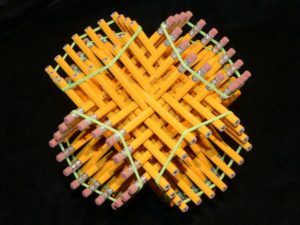 The best pencils to use are the yellow ones that you find everywhere in America, usually sold under the name Ticonderoga or store brands like Staples or Office World. They’re cheap, dependable and they come in packs of 80. If you can’t get them then any hexagonal pencils, or even round ones, will do. But don’t buy the very cheapest: they often bend and sometimes snap!
The best pencils to use are the yellow ones that you find everywhere in America, usually sold under the name Ticonderoga or store brands like Staples or Office World. They’re cheap, dependable and they come in packs of 80. If you can’t get them then any hexagonal pencils, or even round ones, will do. But don’t buy the very cheapest: they often bend and sometimes snap!
Most of the time it’s good to use 72 pencils, along with 8 elastic bands. The multicoloured Hexastix here, by contrast, only uses 48 pencils: this is because they’re round pencils and the model turns out slightly fatter. The pencils aren’t quite long enough to make it with 72, but the model is still very pretty.
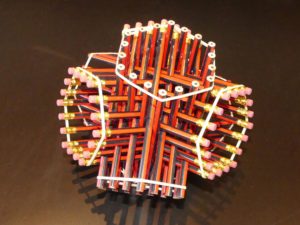 Another option is to leave one pencil at the centre of each hexagonal ‘tube’ – or to leave a small hexagon, or even to leave the space entirely filled.
Another option is to leave one pencil at the centre of each hexagonal ‘tube’ – or to leave a small hexagon, or even to leave the space entirely filled.
You can also glue the pencils together, but that’s fiddly and means you can’t take it apart – whereas one of the joys of the glueless model is that you can dismantle it, set it up anywhere, and then dismantle it again to take it home.
At a pinch, of course, you could just use any old sticks – but make sure they’re nice tidy sticks.
If you want to make a Hexastix yourself, round up 72 pencils and 8 elastic bands and then follow the instructions in Matt Parker’s How To Make A Hexastix video.
Mathematically a Hexastix demonstrates a number of interesting points:
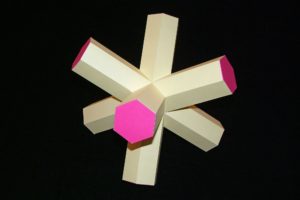 The structure is basically 4 hexagonal tubes intersecting. When people first realise this it’s often a bit surprising because they tend to think it’s only 3 tubes – but in fact it’s 4.
The structure is basically 4 hexagonal tubes intersecting. When people first realise this it’s often a bit surprising because they tend to think it’s only 3 tubes – but in fact it’s 4.
The 4 tubes follow the 4 diagonals of a cube. (If that’s not obvious, here is a video with a slightly odd Scandinavian lady explaining it.)
They also form the shape of an Octa-Hexa-Hemioctacron, pictured here, which is the dual of the Octahemioctahedron. (I’ll write that up properly some day.)
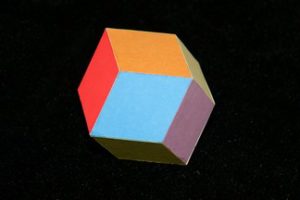
And just in case you wondered… the shape enclosed at the centre of the Hexastix is a Rhombic Dodecahedron.
Lastly here are some more pictures:

